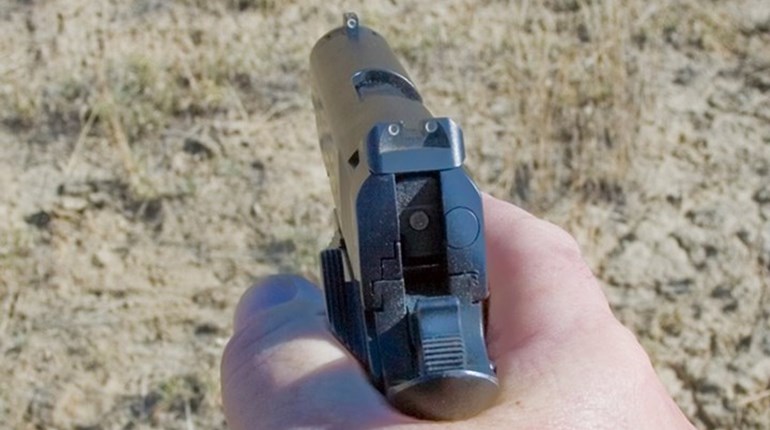
The Problem:
You have just completed a class at a nationally known shooting academy where you learned a lot of good techniques that improved your shooting. One technique you could not quite grasp, however, was the instructors insisting you keep both eyes open to see the sights properly in order to place precision shots on the target. As a result, your success in using this method was less than desirable. Yet, when squinting or closing one eye—using the other to focus on the sights—your results were excellent and at the top of the class. Even with that success, you were admonished with the insistence that the only way to shoot correctly was to keep both eyes open. You respect the instructor and the reputation of the academy, but question wisdom of the institution for insisting that you shoot in a manner that didn’t result in the success of hitting the intended target. After all, isn’t the objective of shooting ultimately to hit your target?
The Solution:
All too often, firearms instructors are doctrine-based and insist on a one-size-fits-all method of training. This is either because the academy they work for requires they teach that way or the instructors don’t know any better and teach that way because that’s how it has always been taught.
A better way to get results from students is to be flexible and work toward objectives using the student’s natural attributes as opposed to a specific methodology, which ignores that each of us have differences in our visual and physical capabilities.
Another failure in firearms training is to confuse precision shooting, marksmanship and shooting tight little groups with liberal time constraints, with combat shooting where the objective is getting sufficient hits on a target of variable size and shape quickly enough to neutralize the threat. Time, distance, cover and other variables make the visual input needed to achieve success a different stream of information. Although this is a subject to be covered in depth for another time, physiologically speaking it is likely both eyes will be open and on the threat where your personal safety is being threatened.
Just to put this into perspective from one viewpoint that makes sense to most people, precision shooting requires consistent sight alignment and sight picture combined with a shot release that has little to no affect on the sight alignment or the sight picture—shot after shot. It is unlikely too many people have the same visual clarity and level of eye dominance where they can all be put into a single category. For example, as we age visual clarity, particularly in close proximity, degrades as physical changes take place. Another fact, rarely recognized in the firearms-training community, is that eye dominance is variable from strong to virtually nonexistent. This factor greatly affects how well a shooter can place their visual attention on sight alignment and sight picture.
A person with a strong dominant eye will usually find it easier to maintain visual attention on the sights with both eyes open when using the dominant eye than a person who is either co-dominant or has a minimal differential in eye dominance.
The person who has a low dominance factor usually has to limit the visual input to the eye not in line with the sights by squinting, closing or otherwise occluding the amount of light and visual information being inputted. This helps to prevent conflict between the two eyes as to what visual information is primary in being processed by the brain.
A quick example would be for a right-handed shooter using the right eye to see the sights while keeping both eyes fully open and intermittently or totally seeing the left side of the gun come into view and taking precedent over the focus on the sights and sight picture. Without strong right eye dominance, the left eye will overpower the right eye unless it is disadvantaged by squinting or closing the eye, which transfers the visual input back to the eye behind the sights.
Remaining as an additional concern is the cross-dominant shooter. This is generally recognized as a person shooting from one side of the body, but having their dominant eye on the opposite side. There are many ways of addressing this issue, but the remedy usually is best realized by using the techniques previously mentioned as a starting point. With handguns, cocking the head to the side and using the dominant off-side eye is not a bad option. With long guns and a strong off-side dominant eye, switching to shooting under the dominant eye may be the best advantage, if you are able to adapt to it with some practice.
Do what is necessary to achieve the desired hits on target because the objective of shooting is hitting what you are aiming at, whether you have one eye open or two.





































